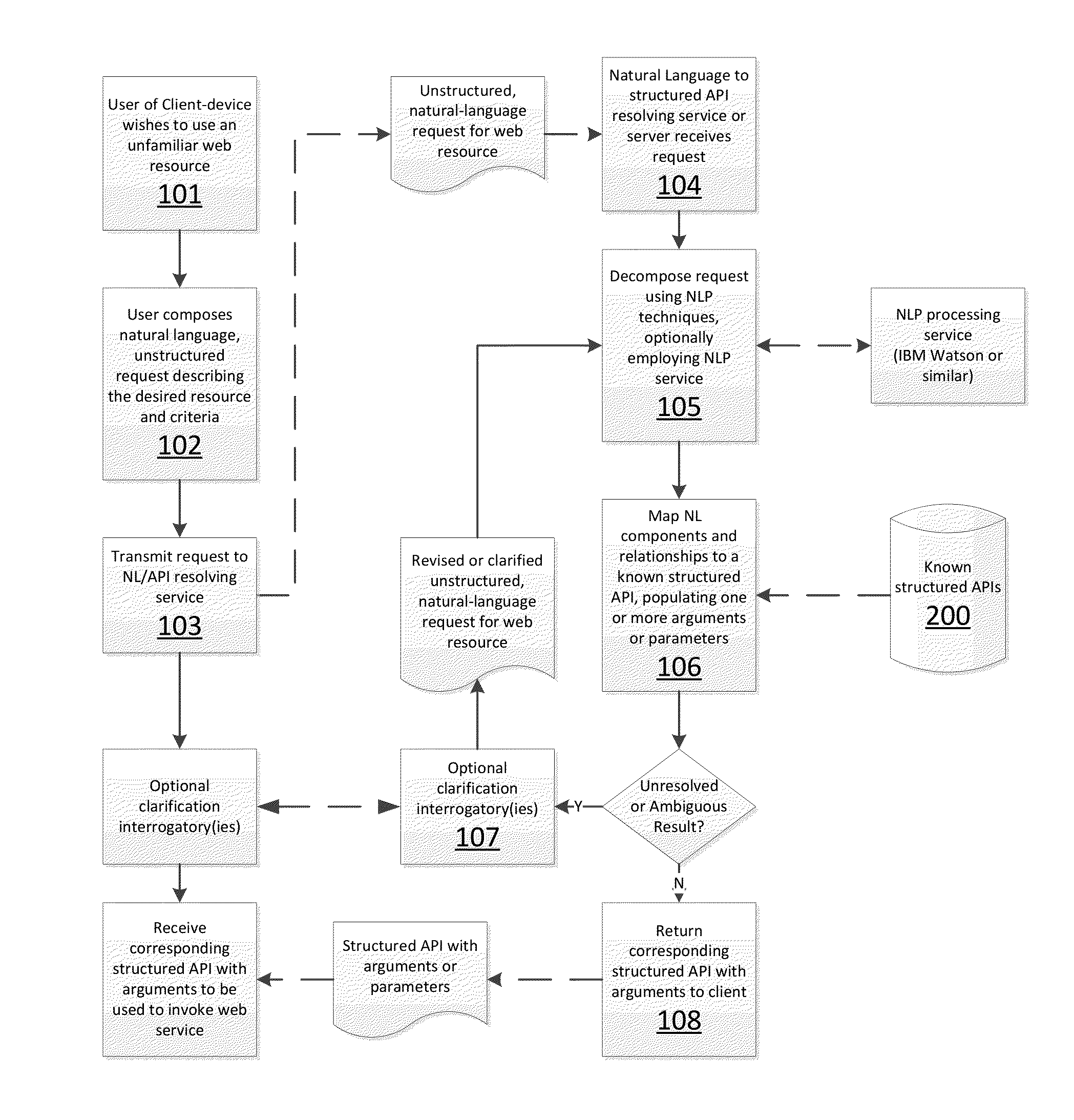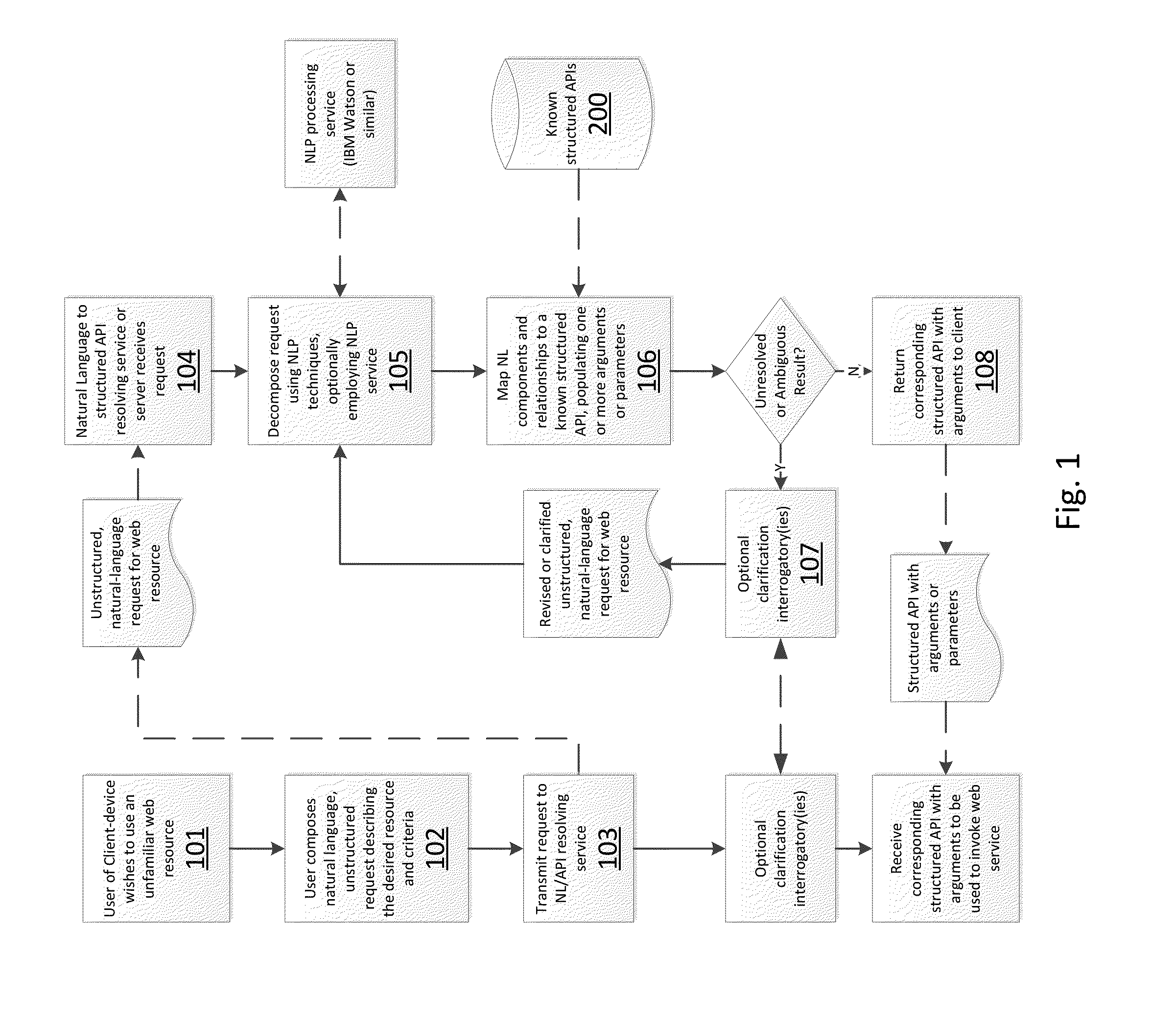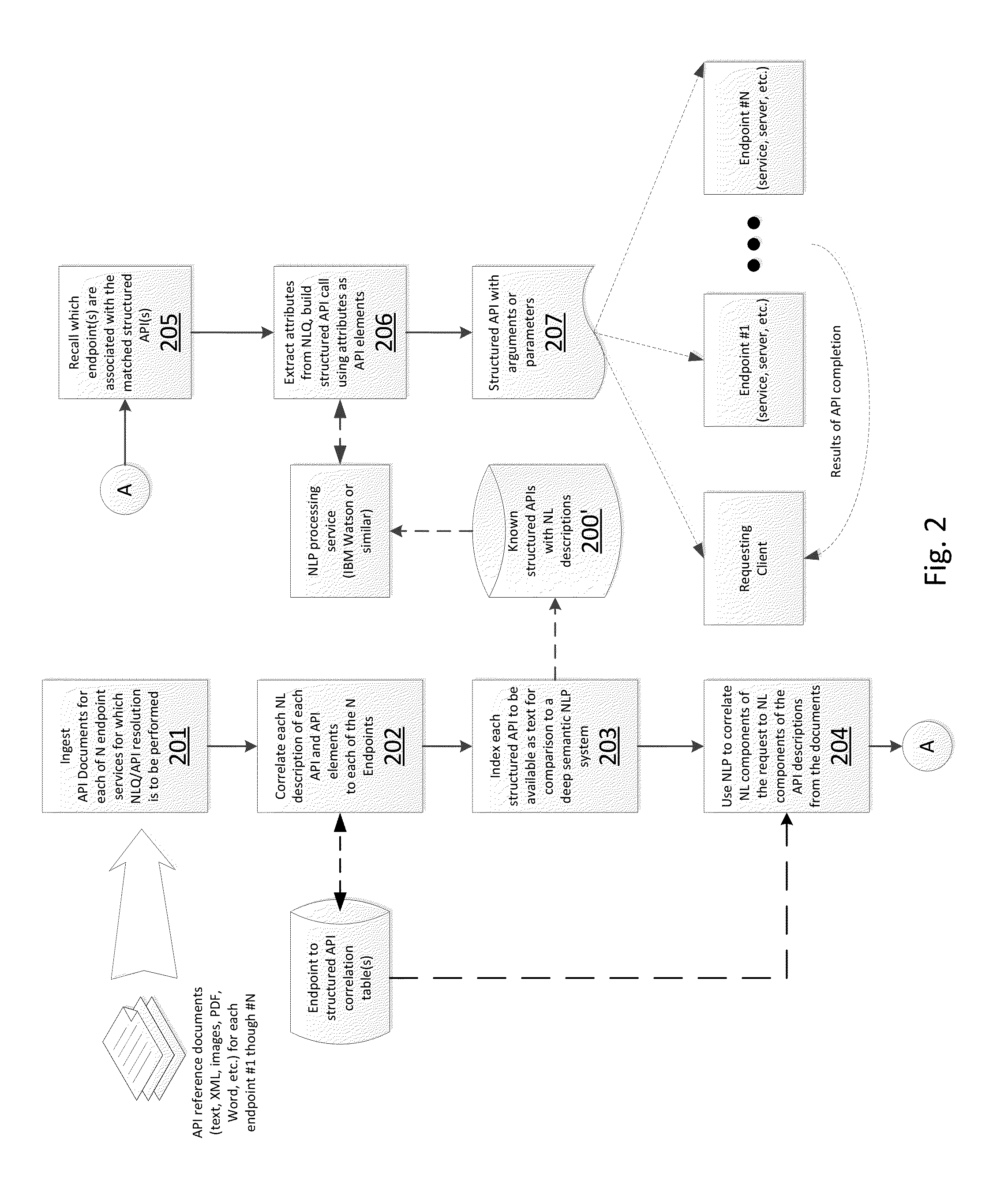Natural language access to application programming interfaces
a programming interface and natural language technology, applied in the field of programming computers, can solve the problems of user frustration, programmers face a considerable challenge, and cannot use the sometimes very effective proprietary functions of some available products, and achieve the effect of improving the system results
- Summary
- Abstract
- Description
- Claims
- Application Information
AI Technical Summary
Benefits of technology
Problems solved by technology
Method used
Image
Examples
first exemplary embodiment
A First Exemplary Embodiment
[0042]In one available embodiment, a client device (e.g., a consumer's cellphone, tablet computer, desktop computer) needs to access one or more resources (e.g., social media activities, unread messages, news postings, friend requests, etc.) from one or more endpoint service providers. Rather than complying with multiple structured APIs to request the resource(s), the user of the client device formulates a request for the resource in an unstructured natural language expression. The client device then sends the unstructured NL query to the service provider's central API endpoint. The service provider system, using an embodiment of the present invention, parses the unstructured query according to natural language processing to extract the query's components, maps the components to its own structured API elements, executes the API call with the populated elements, finally returning an appropriate response, often structured data, to the requesting client. If ...
PUM
 Login to View More
Login to View More Abstract
Description
Claims
Application Information
 Login to View More
Login to View More - R&D
- Intellectual Property
- Life Sciences
- Materials
- Tech Scout
- Unparalleled Data Quality
- Higher Quality Content
- 60% Fewer Hallucinations
Browse by: Latest US Patents, China's latest patents, Technical Efficacy Thesaurus, Application Domain, Technology Topic, Popular Technical Reports.
© 2025 PatSnap. All rights reserved.Legal|Privacy policy|Modern Slavery Act Transparency Statement|Sitemap|About US| Contact US: help@patsnap.com



